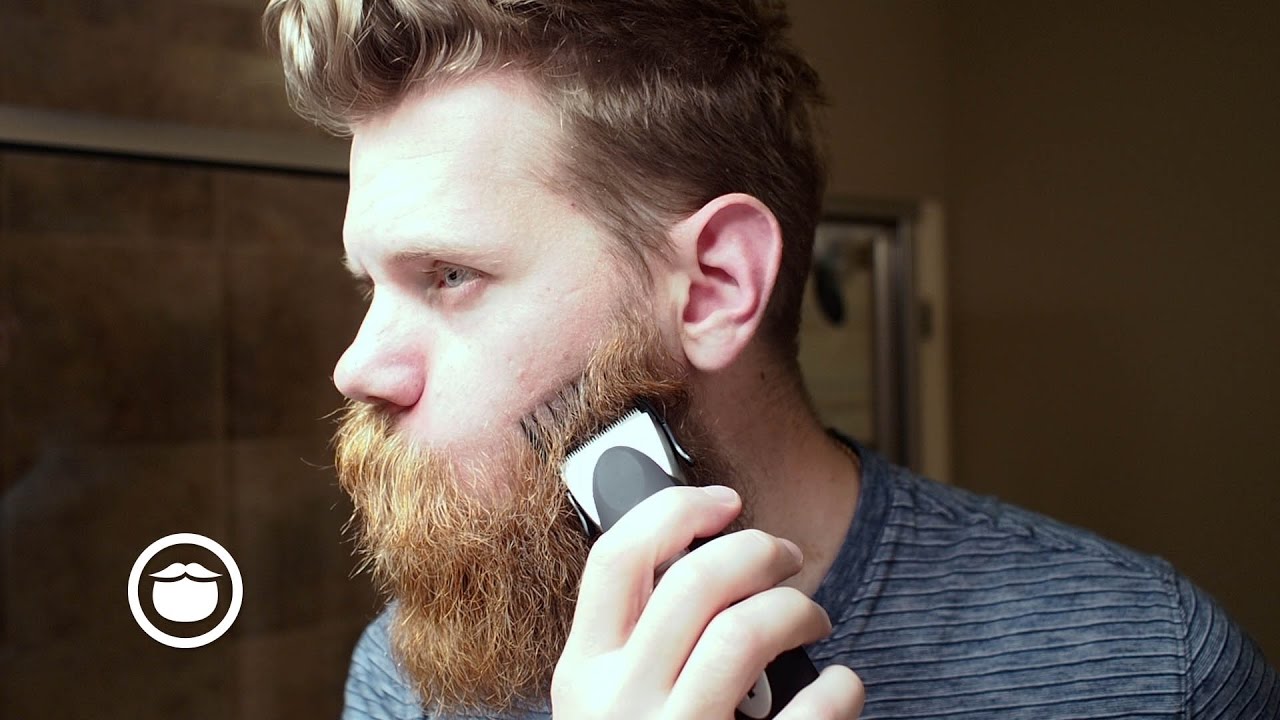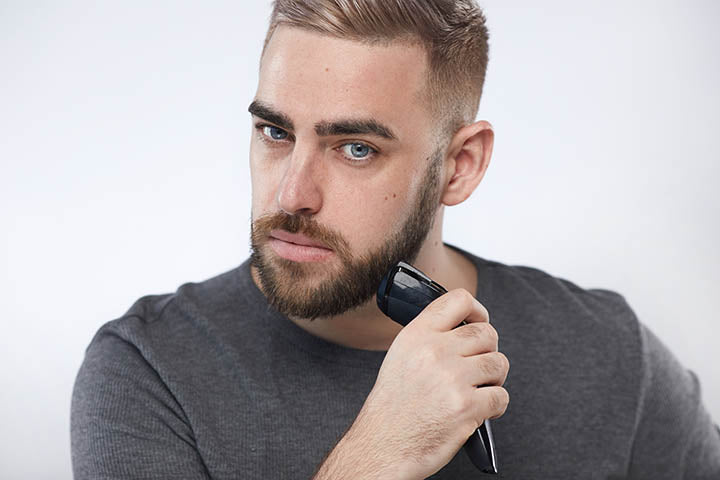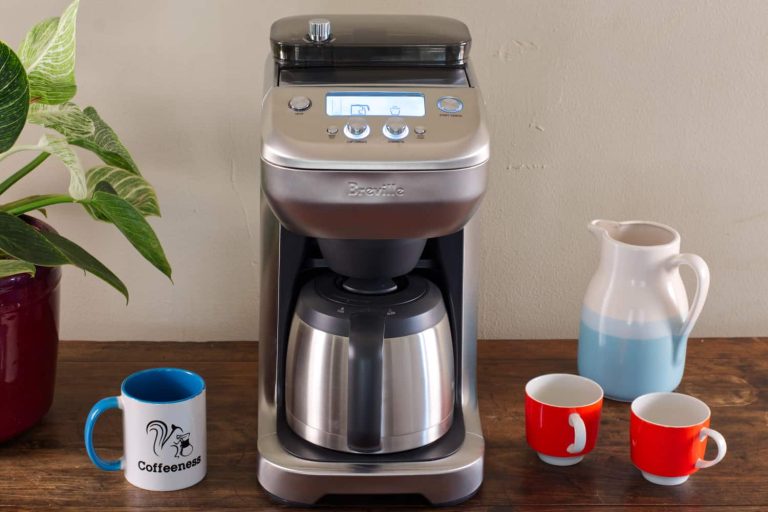How to Cut Beard With Trimmer?

To cut your beard with a trimmer, start by selecting the desired length setting and combing through the beard to remove any tangles. Then, use the trimmer in a downward motion, following the natural contour of your face for an even cut.
Choosing The Right Trimmer For Your Beard
Cutting your beard with a trimmer can be an efficient and convenient way to maintain your facial hair. With so many trimmers available in the market, it can be overwhelming to know which one is the best fit for your needs. In this section, we will explore the factors to consider when selecting a beard trimmer and understand the different types of trimmers available.
Factors to consider when selecting a beard trimmer
Before making a purchase, it is important to consider a few factors that will help you choose the right trimmer for your beard. These factors include:
- Corded or cordless: Determine if you prefer the convenience of a cordless trimmer or don’t mind a corded one. Cordless trimmers offer freedom of movement but require charging, while corded trimmers ensure consistent power but restrict mobility.
- Length settings: Assess the length settings provided by the trimmer. Look for a trimmer that offers a wide range of length options to accommodate various beard styles.
- Blade quality: Consider the quality of the blades. Stainless steel or carbon steel blades are preferred as they are sharp, durable, and deliver precision cutting.
- Battery life: If you opt for a cordless trimmer, check the battery life. It is essential to choose a trimmer with a long battery life, enabling multiple uses before requiring a recharge.
- Ease of maintenance: Look for a trimmer that is easy to clean and maintain. Trimmers with detachable heads or blades make cleaning a breeze and ensure optimal hygiene.
Understanding the different types of trimmers available
There are several types of trimmers available in the market, each offering unique features and functionalities. Here are the common types of beard trimmers:
| Type | Features |
|---|---|
| Foil trimmer | Suitable for precise trimming, featuring a thin, oscillating blade covered by a foil that helps protect the skin from cuts or irritation. |
| Rotary trimmer | Ideal for contouring and trimming, incorporating multiple rotating blades that work efficiently on various beard lengths and angles. |
| All-in-one trimmer | A versatile trimmer that comes with interchangeable heads or attachments, allowing you to trim your beard, mustache, and even nose hair. |
| Detailer trimmer | Designed for precision work, offering a slim and narrow blade that enables you to shape and define your beard’s edges and contours. |
By understanding the types of trimmers available and considering the factors mentioned above, you can make an informed decision when selecting a beard trimmer that best suits your needs. Remember, a high-quality trimmer can make a significant difference in achieving a well-groomed and stylish beard.

Credit: www.milkmanaustralia.com
Preparing Your Beard For Trimming
Washing and Drying Your Beard
Before you start trimming your beard, it’s essential to ensure that it is
clean and dry. Washing your beard helps remove any dirt, grime, and
excess oils that might have accumulated throughout the day. It also
softens the hair and makes it easier to trim. To wash your beard,
follow these steps:
- Step 1: Wet your beard with warm water.
-
Step 2: Apply a beard shampoo or a mild, sulfate-free
cleanser to your beard. -
Step 3: Massage the shampoo into your beard using your
fingertips to create a lather. Make sure to reach the skin underneath. -
Step 4: Rinse your beard thoroughly with warm water
until all the shampoo is removed.
Once you’ve washed your beard, it’s important to dry it completely before
trimming. Wet hair can appear longer than it actually is, which can lead
to uneven results when trimming. Additionally, excess moisture can cause
the trimmer to glide less smoothly, resulting in a less precise cut.
Follow these steps to properly dry your beard:
-
Step 1: Gently pat your beard dry with a clean towel.
Avoid rubbing vigorously, as this can cause frizz and damage the hair
follicles. -
Step 2: If you prefer, you can use a hairdryer on the
lowest heat setting to speed up the drying process. Keep the dryer at a
safe distance and continually move it around to prevent heat damage.
Brushing and Detangling Your Beard
Brushing and detangling your beard before trimming is crucial for an even
and smooth trim. It helps straighten the hair, remove tangles, and
eliminate any knots that could interfere with the cutting process.
Follow these steps to brush and detangle your beard effectively:
-
Step 1: Start by using a beard brush or a wide-toothed
comb to gently work through any tangles or knots. Begin at the ends of
your beard and gradually work your way up to the roots. -
Step 2: Once your beard is tangle-free, brush it in the
direction you want it to lay. This will help train the hair and make it
easier to trim evenly. -
Step 3: For a more precise trim, you can use a smaller
comb or a boar bristle brush to neaten up the edges and ensure all the
hairs are aligned.
By following these steps and properly preparing your beard for trimming,
you’ll set yourself up for a more successful and satisfying grooming
experience. Not only will it help ensure a more even and precise trim,
but it will also contribute to the overall health and appearance of your
beard.
Trimming Techniques For Different Beard Styles
Having a well-groomed beard is an essential part of a man’s style. Whether you prefer a short, medium-length, or long beard, using a trimmer is crucial for maintaining its shape and appearance. In this article, we will discuss the trimming techniques for different beard styles, including trimming a short beard, shaping a medium-length beard, and maintaining a long beard.
Trimming a Short Beard
A short beard requires regular maintenance to keep it looking neat and tidy. To trim a short beard, follow these steps:
- Prepare the beard: Before you begin trimming, make sure your beard is clean and dry. It’s best to trim your beard after a shower when the hair is soft and easier to work with.
- Select the right guard: Choose the appropriate guard size on your trimmer. For a short beard, start with a smaller guard size to achieve a subtle trim.
- Trim the sides: Begin by trimming the sides of your beard, moving the trimmer in an upward motion towards your sideburns. Keep the strokes even and steady to maintain a uniform length.
- Define the neckline: To create a clean and defined neckline, trim below the jawline, following its natural curve. Be careful not to go too high and create an unnatural edge.
- Shape the mustache: Use a precision trimmer or scissors to shape your mustache. Trim any stray hairs that extend over your top lip to maintain a polished look.
- Moisturize the beard: After trimming, apply a beard oil or balm to moisturize and nourish your beard, keeping it soft and healthy.
Shaping a Medium-Length Beard
A medium-length beard offers more versatility and room for style experimentation. To shape a medium-length beard, follow these steps:
- Clean and condition: Before trimming, wash your beard with a beard shampoo and conditioner to remove any dirt or product buildup. This will help make the hair more manageable.
- Use the appropriate guard: Select a guard size that matches your desired length. Start with a longer guard size and adjust as necessary to achieve the desired style.
- Trim evenly: Trim your beard in the direction of hair growth, using smooth and even strokes. Pay attention to areas that need more attention, such as the cheeks, jawline, and neckline.
- Create definition: Use a precision trimmer or scissors to shape the mustache, making sure it doesn’t cover your lips. Additionally, trim the edges of your cheeks and neckline for a neat appearance.
- Style and groom: Apply a beard balm or wax to shape your beard and keep stray hairs in place. Use a comb or brush to distribute the product evenly and create a polished look.
- Maintain regular trims: Regularly trim your medium-length beard to prevent it from becoming unruly. This will help maintain the shape and definition of your chosen style.
Maintaining a Long Beard
A long beard requires extra attention to keep it looking its best. To maintain a long beard, follow these tips:
- Keep it clean: Regularly wash your long beard with a beard shampoo to keep it clean and free from dirt and debris. Be sure to rinse thoroughly and pat dry.
- Comb and detangle: Use a wide-toothed comb or a beard brush to detangle your long beard. This will help prevent knots and keep the hair looking smooth and well-groomed.
- Trim split ends: Regularly check for split ends and trim them for healthier growth. Use sharp scissors or a trimmer with a guard to maintain the length you desire.
- Shape and define: Use a precision trimmer or scissors to shape the mustache and remove any stray hairs that extend beyond your desired style. Pay attention to the edges for a well-defined look.
- Moisturize and condition: Apply a beard oil or balm to moisturize and condition your long beard. This will help prevent dryness, itchiness, and give it a healthy shine.
- Regular trims: While you may be tempted to let your long beard grow without constraints, regular trims are essential to maintain its shape and prevent it from looking unkempt. Trim the ends as needed to keep it looking tidy.
By following these trimming techniques, you can achieve a well-groomed beard that suits your style and enhances your overall appearance. Remember to trim with care, patience, and precision to maintain a beard that you can be proud of.
Step-By-Step Guide To Trimming Your Beard
Trimming your beard is an essential part of beard maintenance. Whether you’re going for a neat and tidy look or a more rugged style, using a trimmer can help you achieve the perfect length and shape. In this step-by-step guide, we’ll show you how to trim your beard with a trimmer, ensuring a clean and professional result every time.
Setting the desired length on your trimmer
The first step in trimming your beard is setting the desired length on your trimmer. This will depend on your personal preference and the style you’re going for. Most trimmers have adjustable settings that allow you to choose the length you want. Here’s how:
- Start by turning on your trimmer and holding it at a 90-degree angle to your face. This will ensure an even cut.
- Choose the desired length setting on your trimmer. If you’re unsure, start with a longer length and gradually decrease it until you achieve the desired look.
- Begin trimming your beard, moving the trimmer in the direction of hair growth. Take your time and work in small sections to ensure an even trim.
- Continue trimming your beard until you’ve achieved the desired length and shape. Remember to regularly check your progress in a mirror to make sure you’re on track.
Trimming the neckline and cheek line
Trimming the neckline and cheek line is crucial to achieve a well-groomed beard. It helps create a clean and defined look. Here’s how to do it:
- Define the neckline by imagining a curved line that connects your earlobe to the corner of your jaw. This will be the bottom boundary of your beard.
- Trim the hair below this line, using your trimmer. Make sure to maintain an even and straight line across your neck.
- Next, move on to the cheek line. Imagine a diagonal line that connects your sideburn to the edge of your mustache.
- Trim the hair above this line, using your trimmer. Again, make sure to maintain a clean and defined line.
Trimming the mustache and sideburns
When it comes to your mustache and sideburns, precision is key. Here’s how to trim them:
- Start by combing your mustache and sideburns to untangle any knots or stray hairs.
- Using a small comb as a guide, trim the excess hair from your mustache. Be cautious not to trim too much, as it can take time to grow back.
- For your sideburns, comb them down and trim any excess hair that extends beyond the natural hairline.
- Regularly check your progress in a mirror and make any necessary adjustments until you’re satisfied with the length and shape of your mustache and sideburns.
Tips For Achieving A Professional-Looking Trim
Whether you’re a seasoned beard enthusiast or a beginner, achieving a professional-looking trim can make a world of difference in your overall appearance. It not only helps you maintain a well-groomed and stylish beard but also adds a touch of sophistication to your overall look. Here are some essential tips to help you achieve that neat and refined trim you’ve always wanted:
Using the Right Comb Attachments
One of the key aspects of achieving a professional-looking trim is using the right comb attachments for your trimmer. Comb attachments come in various sizes and are designed to help you achieve different beard lengths. When selecting a comb attachment, consider the length you desire and ensure it is compatible with your trimmer. A shorter attachment is ideal for neat and precise trims, while a longer attachment allows for a more natural and fuller look.
Going Slow and Steady
When it comes to trimming your beard, patience is key. Avoid rushing through the process as it may lead to uneven cuts and an overall messy look. Instead, take your time and go slow and steady. Start by trimming a small section of your beard at a time, paying attention to details and ensuring each area is trimmed evenly. Regularly check your progress in a mirror and make adjustments as necessary. Remember, a professional-looking trim is all about precision and attention to detail.
Regularly Cleaning and Maintaining Your Trimmer
To achieve consistent and effective trims, it is crucial to regularly clean and maintain your trimmer. Over time, beard hair and product residue can build up on the blades, affecting their performance. Before each trim, take a moment to clean the blades with a small brush or a fine-tooth comb. This will help ensure smooth and even cuts. Additionally, regularly oiling and lubricating the trimmer’s moving parts will keep it running smoothly and extend its lifespan.
Dealing With Common Beard Trimming Issues
Dealing with common beard trimming issues is an essential part of maintaining a well-groomed and attractive beard. While using a trimmer can make the process much easier, it’s not uncommon to encounter a few challenges along the way. In this section, we’ll discuss some of the most common problems that men face when using a trimmer to cut their beard, and offer solutions to help you achieve a clean and polished look.
Fixing uneven patches
Even with the most careful trimming technique, it’s possible to end up with some uneven patches in your beard. This can be frustrating, especially if you’re aiming for a perfectly symmetrical and uniform look. Luckily, there are a few strategies you can use to fix this issue.
The first step is to identify the areas that need attention. Take a close look at your beard in natural light and use a handheld mirror or ask a friend for assistance if needed. Once you’ve identified the uneven patches, follow these steps:
- Use a shorter guard setting on your trimmer to gradually trim down the longer hairs in the patchy areas. Start with a longer guard and gradually decrease the length until you’ve achieved a more even appearance.
- If the patchiness is more noticeable on one side of your face, you can use a technique called “feathering” to create a natural blend. This involves lightly running the trimmer over the transition area between the shorter and longer hairs, creating a gradual transition.
- If you still have some stubborn uneven patches, you can use scissors to carefully trim the longer hairs until you achieve a more balanced look.
Handling ingrown hairs
Ingrown hairs can be a common problem when trimming your beard, particularly if you have curly or coarse hair. These hairs can become trapped under the skin, resulting in redness, inflammation, and discomfort. If you’re dealing with ingrown hairs, here are a few steps you can take to address the issue:
- Gently exfoliate your skin before trimming your beard to remove any dead skin cells and promote healthy hair growth. This can help prevent ingrown hairs from forming.
- If you notice an ingrown hair, avoid picking or squeezing it, as this can lead to infection. Instead, use a warm compress to help bring the hair to the surface.
- Once the hair is visible, use clean, sterilized tweezers to gently pull it out. Avoid applying too much pressure, as this can cause further irritation.
- After removing the ingrown hair, apply a soothing aftershave balm or lotion to help reduce inflammation and promote healing.
Addressing split ends
Split ends can make your beard appear less healthy and well-groomed. Trimming your beard regularly with a trimmer can help prevent split ends, but if you notice any existing split ends, here’s how you can address the issue:
- Gently comb through your beard to identify the split ends. They often appear as small, frayed strands.
- Use sharp, clean scissors to carefully trim the split ends. Be sure to make clean, straight cuts to prevent further damage.
- Regularly moisturize your beard with a beard oil or balm to keep the hair hydrated and prevent split ends from forming.
By following these tips for fixing uneven patches, handling ingrown hairs, and addressing split ends, you’ll be able to overcome common trimming issues and maintain a well-groomed beard. Remember, patience and consistent maintenance are key to achieving the best results.
Beard Care And Maintenance After Trimming
Once you’ve successfully trimmed your beard with a trimmer, your job is not yet complete. Proper beard care and maintenance are crucial to keep your facial hair healthy, soft, and well-groomed. In this section, we will discuss three essential steps to include in your post-trimming routine:
Applying beard oil or balm
One of the most important steps in beard care after trimming is the application of beard oil or balm. These products not only provide nourishment to your facial hair but also help to combat dryness, itchiness, and dandruff. They contain natural ingredients such as jojoba oil, argan oil, and shea butter, which deeply moisturize your beard, leaving it soft and manageable.
To apply beard oil or balm, follow these simple steps:
- After trimming, make sure your beard is clean and dry.
- Pour a few drops of beard oil onto your palm.
- Rub your hands together to distribute the oil evenly.
- Gently massage the oil into your beard, starting from the roots and working your way down to the ends.
- Use a beard comb or your fingers to ensure even distribution.
Combing and styling your beard
Combing and styling your beard is an essential part of beard care. It helps to keep your beard tangle-free, neat, and well-shaped. Here’s how to do it:
After applying beard oil or balm, follow these steps:
- Choose a beard comb or brush that suits your beard length and texture. For shorter beards, a comb with narrow teeth works best, while a brush with bristles is ideal for longer beards.
- Start by combing your beard in the direction of hair growth to detangle any knots or snags gently. Be sure to comb through the entire beard, including the mustache and sideburns.
- Next, use your comb or brush to style your beard into the desired shape. Comb the hair downwards for a sleek look or use gentle upward strokes for a more voluminous appearance.
Incorporating a regular trimming schedule
In addition to the immediate care after trimming, it’s crucial to incorporate a regular trimming schedule into your beard maintenance routine. Trimming your beard regularly helps to prevent split ends, maintain shape, and promote healthy growth.
Here are some tips for establishing a regular trimming schedule:
- Consider your beard growth rate, texture, and desired length. This will help determine how frequently you need to trim your beard.
- Invest in a good quality trimmer with adjustable settings to achieve the desired length.
- Create a schedule that suits your lifestyle. For some, trimming every two weeks may be sufficient, while others may need more frequent touch-ups.
- Stick to your schedule consistently to ensure your beard always looks well-maintained.
By following these steps, you’ll be able to take care of your beard and maintain its health and appearance even after trimming.
Frequently Asked Questions Of How To Cut Beard With Trimmer
Do You Shave Up Or Down With A Beard Trimmer?
With a beard trimmer, it is best to shave in the direction of hair growth.
What Is The Best Way To Use A Beard Trimmer?
To use a beard trimmer effectively:
1) Comb your beard to remove knots and tangles.
2) Start with a longer guard length and gradually trim to your desired length.
3) Trim against the direction of hair growth for a cleaner cut.
4) Clean the trimmer blades regularly to maintain performance.
5) Moisturize your beard after trimming to keep it healthy.
Which Way Do You Trim Your Beard With Clippers?
Trim your beard with clippers by moving in the direction of your hair growth.
How Close Does A Beard Trimmer Cut?
A beard trimmer cuts hair very close, providing a clean look. It trims hair to a desired length, allowing for styling and grooming. The precision blades ensure a close and even cut, helping to maintain a well-groomed appearance.
Conclusion
Mastering the art of beard trimming with a trimmer is a skill that can enhance your grooming routine. With the right techniques and a bit of practice, you can achieve a neat and well-maintained beard that suits your style. Remember to start with a clean, dry beard, choose the right trimmer settings, and follow the natural contours of your face. Don’t rush; take your time, and be patient. With these tips in mind, you’ll be on your way to a perfectly trimmed beard in no time.



